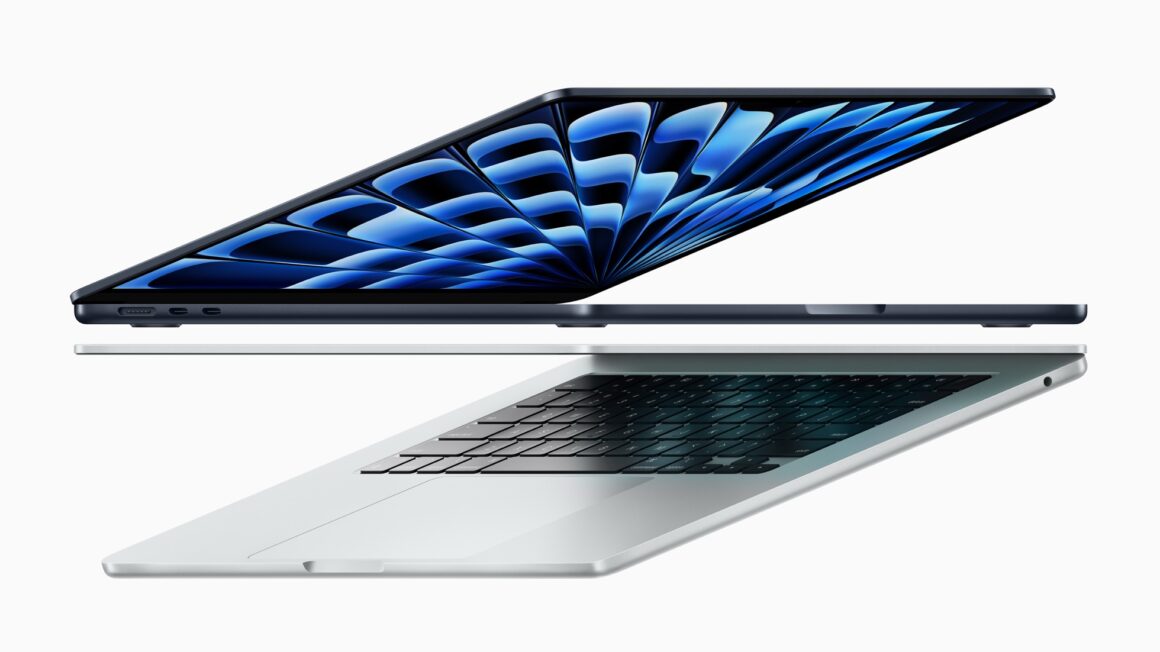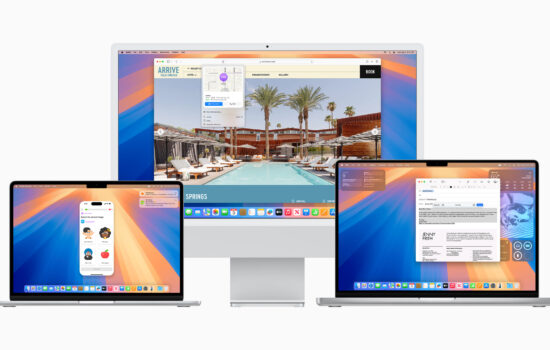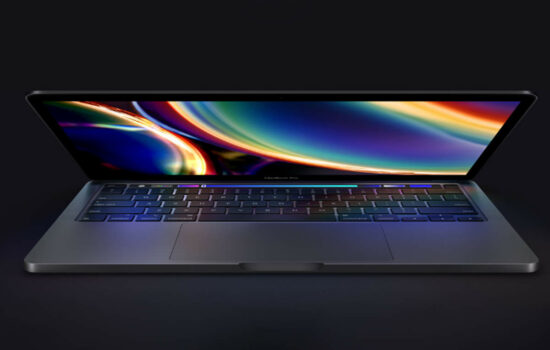With the recent launch of the first M4-based Macs, Apple still has the rest of the lineup to upgrade to the latest series of Apple Silicon. One of those Mac models is the MacBook Air, which has been Apple’s most popular laptop, so what can we expect from the next update for the MacBook Air? We can expect a lot of great enhancements beyond the chip upgrade, so let’s break down the new features we can expect.
M4 chip
Currently, both the latest 13-inch and 15-inch MacBook Air feature the M3 chip, which Apple updated those models back in March of this year. So with the recent launch of the M4 MacBook Pros, Apple may follow the same update schedule again by updating the Airs to the M4 chip around next March, similar to when Apple updated the Airs several months after the debut of the M3 family of MacBook Pros.
Similar to the iMac, the MacBook Air has models with either a binned chip (at least one CPU or GPU core disabled) or a full-fledged chip. The 13-inch M3 Air’s base standard configurations have the binned chip (8-core GPU) whereas the higher configurations have the full-fat chip (10-core GPU). All configurations of the 15-inch M3 Air use the full-fat chip (10-core GPU). With that said, the base configuration of the upcoming 13-inch Air may come with the M4 chip (8-core CPU/8-core GPU), and the rest of the configurations for both the 13-inch/15-inch Air will certainly feature the full-fledged M4 chip (10c CPU/10c GPU).
External display support
External display support is going to be substantially improved for the next MacBook Air. Based on the M4 chips’ capabilities in both the iMac (4-port) and MacBook Pro, those machines can support up to two external 6K displays in addition to the built-in display, which is possible thanks to the M4 chip (10-core CPU). For the iMac (2-port), which features the binned M4 chip, it can only support up to one external 6K display (in addition to the built-in display).
So based on those specifications, the base configuration of the 13-inch Air will still support up to one external display, but all the higher configurations of both the 13-inch and 15-inch Air will finally support up to two external displays with the laptop lid open this time. This will be more than a welcome improvement over the M3 models where it can support two external monitors, but you’d need to have the laptop lid closed. For I/O, I don’t expect the next MacBook Air models to feature any more ports as Apple may want to reserve the wider selection of ports for the MacBook Pro.
Nano-texture display option
The nano-texture display option was introduced on the Pro Display XDR, and it made its way to the Studio Display, and now the 24-inch iMac and all MacBook Pro models. However, Apple makes this option exclusive to some higher configurations, particularly the iPad Pro (1TB/2TB storage configurations), iMac (4-port), and MacBook Pro (all models). What do those three products have in common? They all have at least the full-fledged M4 chip (10c CPU/10c GPU). Of course, MacBook Pros with M4 Pro/M4 Max get this display option as well.
So Apple may also keep this display option exclusive to all MacBook Air options when configured with the full-fledged M4 chip.
On the other hand, the Liquid Retina display on both sizes of the MacBook Air will likely be largely the same as the M3 models. We may see slightly brighter displays, who knows? But don’t expect anything dramatic for this next update as we don’t expect an OLED MacBook Air to come no earlier than 2027.
12MP Center Stage camera
Both the latest iMac and MacBook Pros feature the 12MP Center Stage camera from the Studio Display, so Apple may bring that same feature to the M4 MacBook Airs. I was quite surprised that Apple was able to bring that feature to the MacBook Pros given how thin their laptop lids were, so I wouldn’t see any issues bringing that to the MacBook Air. The ultra-wide capabilities of the Center Stage camera allow for Desk View, and the MacBook Air may also have that feature. However, expect the standard microphones and speaker system (four on 13-inch vs. six on 15-inch) to remain largely the same as the current M3 models.
Same design and finishes
The M4 MacBook Pros’ design remains identical to the M3 counterparts, so I expect the same for the M4 MacBook Airs along with the same finishes – silver, starlight, space gray, and midnight as Apple tends to reserve the space black finish for its Pro products like the iPad Pro.
Better battery life?
With the M4 lineup of MacBook Pros, we’ve seen an increase in battery life on those models. Those models can go up to 24 hours on a single charge; this is due to both the higher efficiency of M4 as well as slightly larger batteries. Of course, battery life varies on usage and configuration, but we may see longer battery life on the M4 Airs as well, possibly closer to Apple’s claims on the M4 MacBook Pro.
Unified memory, storage options, and pricing
When Apple updated the iMac, Mac mini, and MacBook Pro with unified memory now starting at 16GB, Apple also bumped that default on both the M2 and M3 models. The M4 MacBook Airs will, of course, start with 16GB of memory. Similar to the iMac, the base configuration (8c CPU/8c GPU) can be configurable to 24GB of memory while the rest of the configurations (10c CPU/10c GPU) can be configurable to either 24GB or 32GB of memory.
When it comes to storage, expect the same configurations as the M4 iMac where the base configuration (8c CPU/8c GPU) can go up to 1TB of storage, and the rest of the configurations can go up to 2TB of storage.
Currently, Apple offers the 13-inch Air with M2 and 13-inch/15-inch Air with M3, so when Apple updates the MacBook Air with M4, I expect Apple to keep just the 13-inch Air with M3 at a lower price of $999 USD as a more affordable option for customers. So I expect the pricing for all the standard configurations to be largely the same:
- 13-inch
- $999 – 13-inch Air with M3 (8c CPU/8c GPU) / 16GB memory / 256GB SSD
- $1,099 – 13-inch Air with M4 (8c CPU/8c GPU) / 16GB memory / 256GB SSD
- $1,299 – 13-inch Air with M4 (10c CPU/10c GPU) / 16GB memory / 512GB SSD
- $1,499 – 13-inch Air with M4 (10c CPU/10c GPU) / 24GB memory / 512GB SSD
- 15-inch
- $1,299 – 15-inch Air with M4 (10c CPU/10c GPU) / 16GB memory / 256GB SSD
- $1,499 – 15-inch Air with M4 (10c CPU/10c GPU) / 16GB memory / 512GB SSD
- $1,699 – 15-inch Air with M4 (10c CPU/10c GPU) / 24GB memory / 512GB SSD
For what it’s worth, now that the 16GB of memory is now the default on all MacBook Air models, there’s no better time than now to buy a Mac in time for the Black Friday and holiday season as we can expect huge sales for Apple’s most popular laptop. So the MacBook Air is still highly recommended for customers who are finally switching from either a PC or an older Intel-based Mac.
Follow us on X for the latest news and articles.








